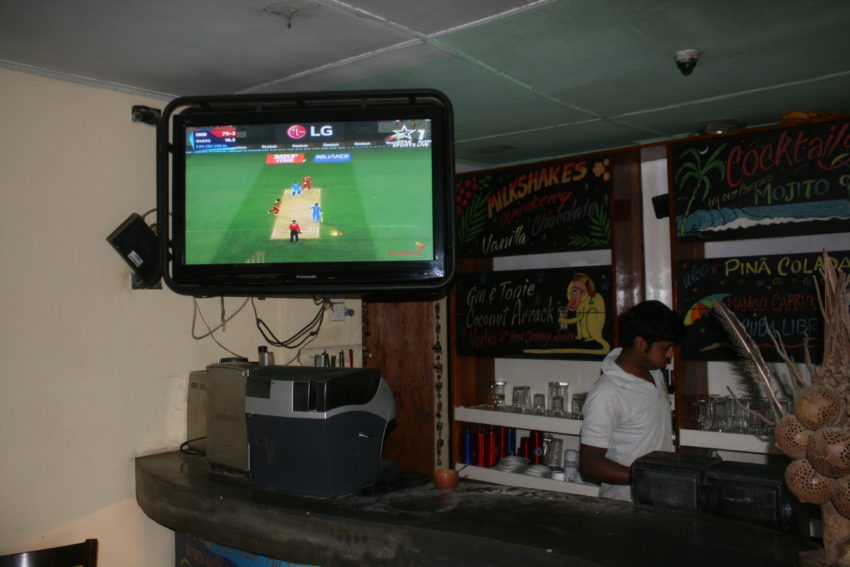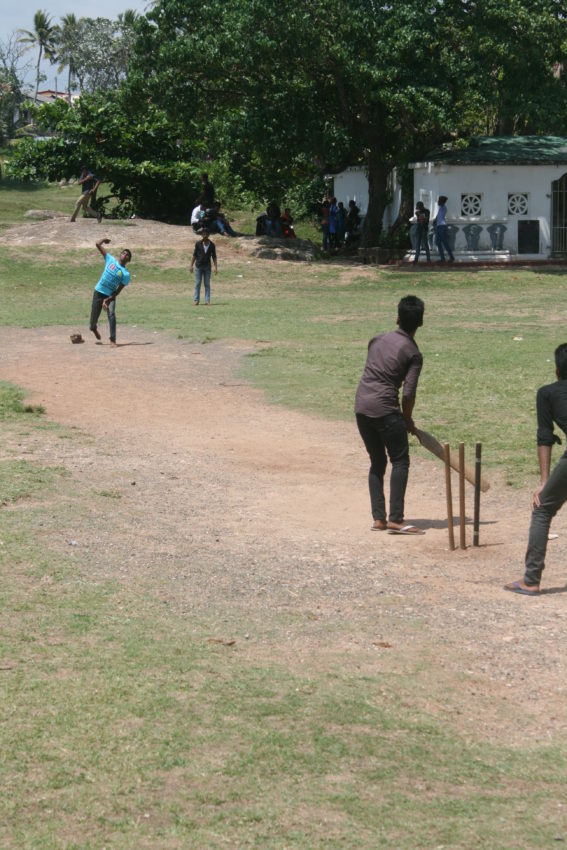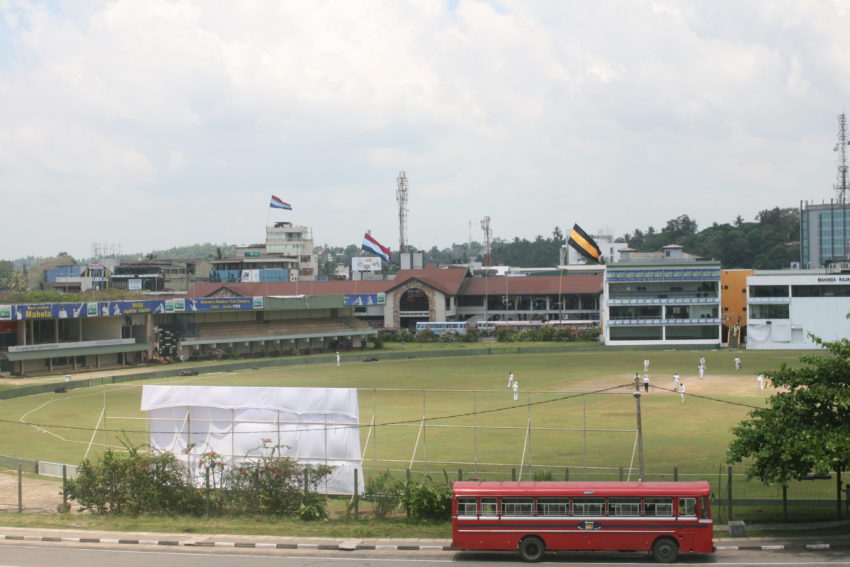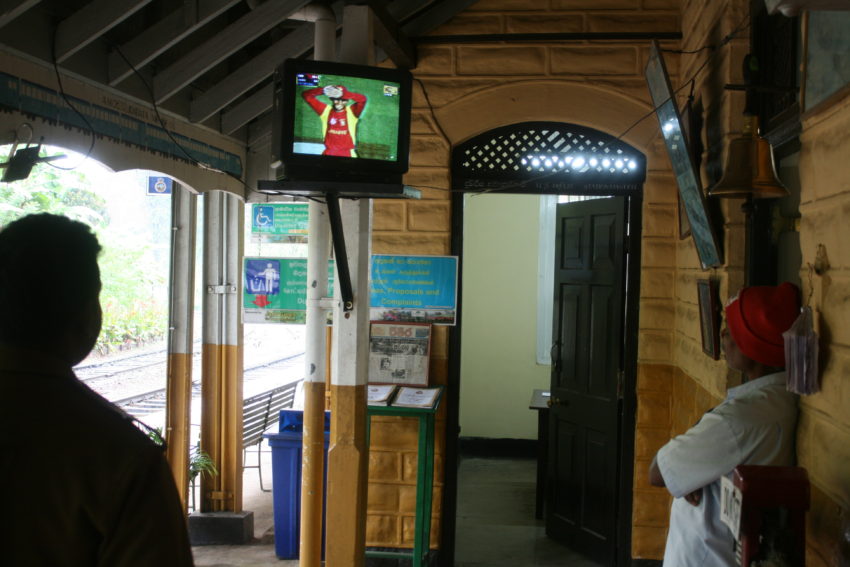Cricket is baseball on barbiturates but World Cup has Sri Lanka on edge of its lanais chairs

ELLA, Sri Lanka — Last night was a first. I don’t remember this ever happening on the road before. Well, Lincoln, Neb., maybe. Ames, Iowa, definitely. I couldn’t believe it when it happened. It hit me like a runaway tuktuk.
I was bored.
I really was. I had nothing to do and nowhere to go. I had no one to talk to. So what do you do when nothing is around to entertain you, when there’s no one to talk to you?
You watch cricket.
The Cricket World Cup is going on in Australia and New Zealand and the games are shown at Chill and also at Roti Hut where I had lunch. Any bar that has Sky Sports shows the games live, some starting at 6 a.m.

To tell you how big cricket is in Sri Lanka, seemingly half the ad posters around the country feature a national cricket player. If you judge cricket by the street scene, you’d think the entire national team is fueled by chocolate milk. Sri Lanka cricket jerseys are sold in souvenir stands just as predominantly as sarongs and tea. Like every small town in Latin America has a soccer field, every town in Sri Lanka has a cricket ground. If there’s no stadium, there is a scruffy vacant lot with sparse grass worn bare in a long strip between the bowler and the batsmen. I’ve seen pickup games with as much participation as I’ve seen in pickup baseball games in Cuba and the Dominican Republic.

Sky Sport’s coverage is really good. It makes cricket actually sound action packed. It isn’t. It’s like baseball taking a nap. To give you an idea of how cricket is played, think of baseball. Then think of baseball in which the rules don’t require you to run if you don’t like where you hit it. Batsmen stand up there with more padding than hockey goalies in the middle of the field. They can hit it forward or backward. There is no foul territory. Imagine a baseball player hitting a foul ball and watching outfielders run endlessly trying to track it down.
They earn my admiration for having hands as tough as longshoremen’s but watching them sometimes flail helplessly at scorching line drives makes me glad I grew up on the west side of the pond.
Baseball is talking about speeding up the game? Cricket needs to speed up the game just to reach the level of chess. Even when they hit the ball there’s not much action. The fielders must cover an area the size of a small farmland. If the “batsman” hits the ball in the massive gaps and it rolls, they don’t have to run. It’s going to hit the outlying circle just before the fence and it’s an automatic four runs. If they hit the ball over the fence, it’s an automatic six. They don’t have to run, either. So what you have is a glorified home run derby. A batsman clobbers the ball and since they’re in the middle of the cricket ground, it only has to travel about 300 feet to reach the fence which it often does. One Sri Lankan hit six “sixes” in a row. He just stood there and watched the flight of the ball and didn’t move, kind of like Babe Ruth in his later years when he was so sick and hung over he had a designated runner for him. World Cup games last about four hours. County championships traditional in England last about four days or until the last spectator pokes out his eyes with a crab fork.

The cricketeers skills, however, are remarkable. The ball bounces at batsmen at about 90 mph. A big issue in cricket is when a bowler will crack the 100 mph barrier for the first time. The batsman takes a bat that is flat as a small ironing board and looks as heavy as a tree trunk. He somehow manages to twist his body to flick the ball to all corners of the field. Some even clip the ball just over the head of the “catcher,” known as the wicket keeper, then turn around and watch it roll to the wall. Sometimes they turn all the way around and hit it from the other side, like a switch-hitter who decides mid-pitch to swing the opposite way. The bowler takes about a 10-20 meter run, skewers his body like a pretzel and uncorks a pitch with a straight overhand twirl. It bounces near the batsman’s feet and hopefully, knocks over the three horizontal wickets behind him for an out, or “wicket.” The batsmen rarely miss. I have yet to see anyone miss and the ball hit a wicket which when hit, now in cricket’s 21st century, lights up like a Vegas slot machine.
The rules remain baffling. Each team has 50 “overs.” Each bowler bowls six balls, equaling one “over.” When one team gets all 11 of the other players out, called a “wicket,” the other team bats. If they surpass the other team’s score, they win. That’s why the scores seem remarkably close and aren’t. Against Afghanistan, England won 161-157 yet only two players were called out. The trail line at the bottom of the TV screen read, “England wins by nine overs.” I had no earthly clue what it all meant.

During one long match between Bangladesh and New Zealand, one New Zealand player was on his way to a “hundred.” That’s when a batsman scores 100 runs, the goal of every batsman. The Kiwi kept whacking the ball to every corner of the field. Occasionally if he didn’t hit it far enough he’d run to the opposite wicket and back for two runs. The West Indies outfielders ran more than Manchester United.
I turned to the young bartender at Chill, watching over his shoulder as he poured drinks, and said, “This looks too easy. You only have to hit it less than 100 meters for a six.”
He said, “Yes, but you have to keep doing it and doing it.”
Nowhere is cricket bigger than in India. It’s so big, it is changing the formation of the World Cup. I always thought it’s silly holding a World Cup for sports played in so few countries you could call them boutique sports. Rugby has 20 in its World Cup, which is played this September in England. I think that’s the total number of countries that play the game. That includes the U.S. where rugby players are basically disenchanted football players bitching about playing time or rules against getting hammered after games. The Cricket World Cup has 14 nations. That includes Afghanistan which actually beat Scotland and had one of the more enthusiastic support groups. I’m assuming all those women wearing burqas in the stands weren’t Kiwis.
However, cricket’s world governing body, the International Cricket Council, is reducing the 2019 field in England to 10 teams. It dates back to 2007 when when 16 nations played and India didn’t get out of its group stage. The advertisers lost fortunes. Some experts say that 70-80 percent of cricket’s world economy is generated in India. So the ICC is reducing participation to insure India’s further participation. It worked. India made this year’s semifinals but Australia destroyed New Zealand in the finals in Melbourne.
I’ve enjoyed mostly the interviews between games. Sky has a program called “Legends of Cricket” where a polished, dapper Indian journalist in various expensive shoes sits in what looks like someone’s den and interviews greats from the past. He’s a good interviewer. He interviewed a Pakistani bowler from the ‘80s and ‘90s who basically threw his teammates under the tuktuk for never managing to beat India. He interviewed an Indian bowler who talked about beating England in England and West Indies, known in cricket as the “Westies,” on their home ground. Somewhat grainy film showed two teams all wearing white sweaters and white pants, as if they’re attending afternoon tea, with one group celebrating wildly on the field and in the stands.
Then another program had a smoking-hot raven-haired Indian babe in shorts sitting in a high chair talking to India’s dashing new bowling star. The studio was filled with children who asked him some pretty good questions: Did you ever panic in a match? When did you decide to become a bowler? What actress would you like to date?
This player said people are in awe of him when they meet him. He talked of a stalker who kept trying to get him to marry her. The Indian bowler said words can’t describe the mob scene in Mumbai where they won the 2011 World Cup.
My lasting impressions of cricket will be watching children in Haputale playing pickup cricket with cattle in the background. It will be teens setting up wickets on the sand on the beach in Tangalle. It will be the elegant grandstands of the empty stadium in Galle.
It will not be from a bar’s TV. Yet there I was in Chill, eating a Hawaiian pizza and drinking a beer, watching World Cup highlights all alone. Every table was full of travelers, chatting away, unaware of a World Cup putting this nation on edge.
I was in bed by 9 p.m.

